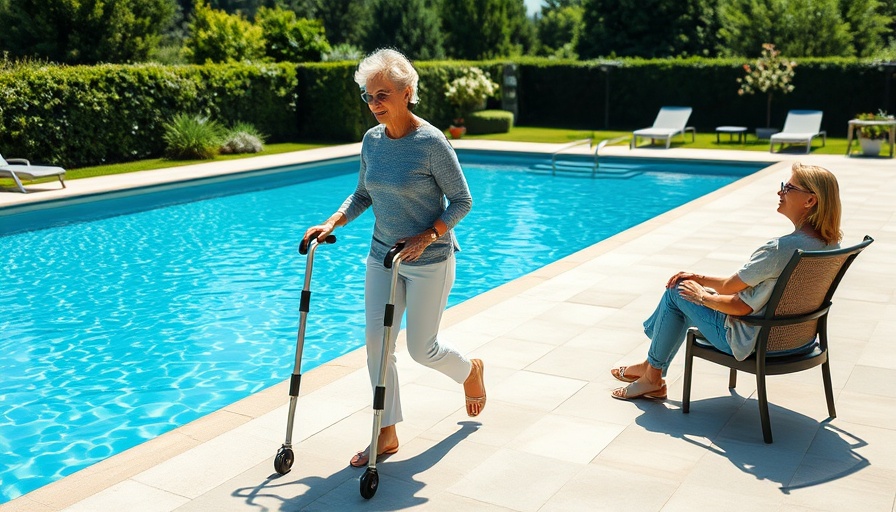
Embracing Change: The Evolution of Wellness
Movement and wellness are often boxed into ideas of high-energy workouts and athletic prowess. However, a transformative mindset encourages us to expand our definitions. Especially for individuals experiencing mobility challenges, it becomes essential to reframe expectations. This journey toward well-being isn't exclusive to physical capability—it’s about emotional resilience and personal growth.
Small Steps Matter: Finding Joy in Movement
For many, the fear of being sidelined by a diagnosis or injury might trigger a sense of loss or frustration. The good news is, small steps still count! Activities like breathing exercises, seated dancing, and gentle stretches not only uplift the spirit but contribute to physical health. These alternatives reconnect individuals with their happiness by allowing enjoyment in movement, even when it looks different than it once did.
The Power of Mindset: Adaptation Over Frustration
Transitioning from conventional exercise routines to embracing more adaptable forms of movement can be challenging. Adopting a mindset of adaptation focuses on the intention behind every action rather than the intensity. A short stroll or a burst of dancing while seated reminds individuals that progress can be gentle. Remember, every little victory matters, and celebrating them transforms how we see ourselves in motion.
Tools for Empowerment: The Promise of Modern Mobility Aids
Choosing the right tools is key for anyone wanting to stay active. Whether through innovative mobility aids like the sleekly designed walker wheelchair or supportive equipment, these choices enhance independence. Firms like Rollz are reimagining mobility devices to ensure they’re not just about support but also style. With devices that blend functionality and aesthetics, they can elevate one’s experience while out in the world.
More Than Just Physical: Crafting a Holistic Wellness Journey
The path to well-being incorporates mental and emotional dimensions that are crucial for a balanced life. Daily wellness routines might engage serene mindfulness practices, like meditation in nature, or indulging in favorite hobbies, whether through music or social gatherings. Recognizing this holistic approach cultivates a deeper connection to one’s body and mind and fosters a more rewarding relationship with wellness.
Community and Connection: The Strength of Shared Experiences
Promoting wellness within communities by sharing successes and challenges strengthens collective bonds. Local groups and initiatives often offer resources and connections that resonate with people grappling with mobility issues. By creating inclusive spaces for laughter, learning, and physical activity that everyone can participate in, these communities become crucial for sharing uplifting journeys and fostering understanding.
Seizing the Opportunity: Make Movement Part of Your Daily Life
It can be easy to overlook how movement is an integral part of our health. Intentionally incorporating movement into your daily routine fosters opportunities for connection and joy. A simple daily walk, even just around the block, can help reconnect you with the world outside your front door. The intention is empowering; with the right approach, movement becomes less about the physical act and more about the feeling of health and connection it inspires.
So whether you find joy in a gentle stretch, a chat with friends at the park, or simply appreciating the beauty around you, remember that each step gives rise to strength and resilience. Lastly, embrace the science of movement and wellness in a way that uplifts you and enhances your overall well-being—past limitations, toward empowerment!
 Add Row
Add Row  Add
Add 



Write A Comment